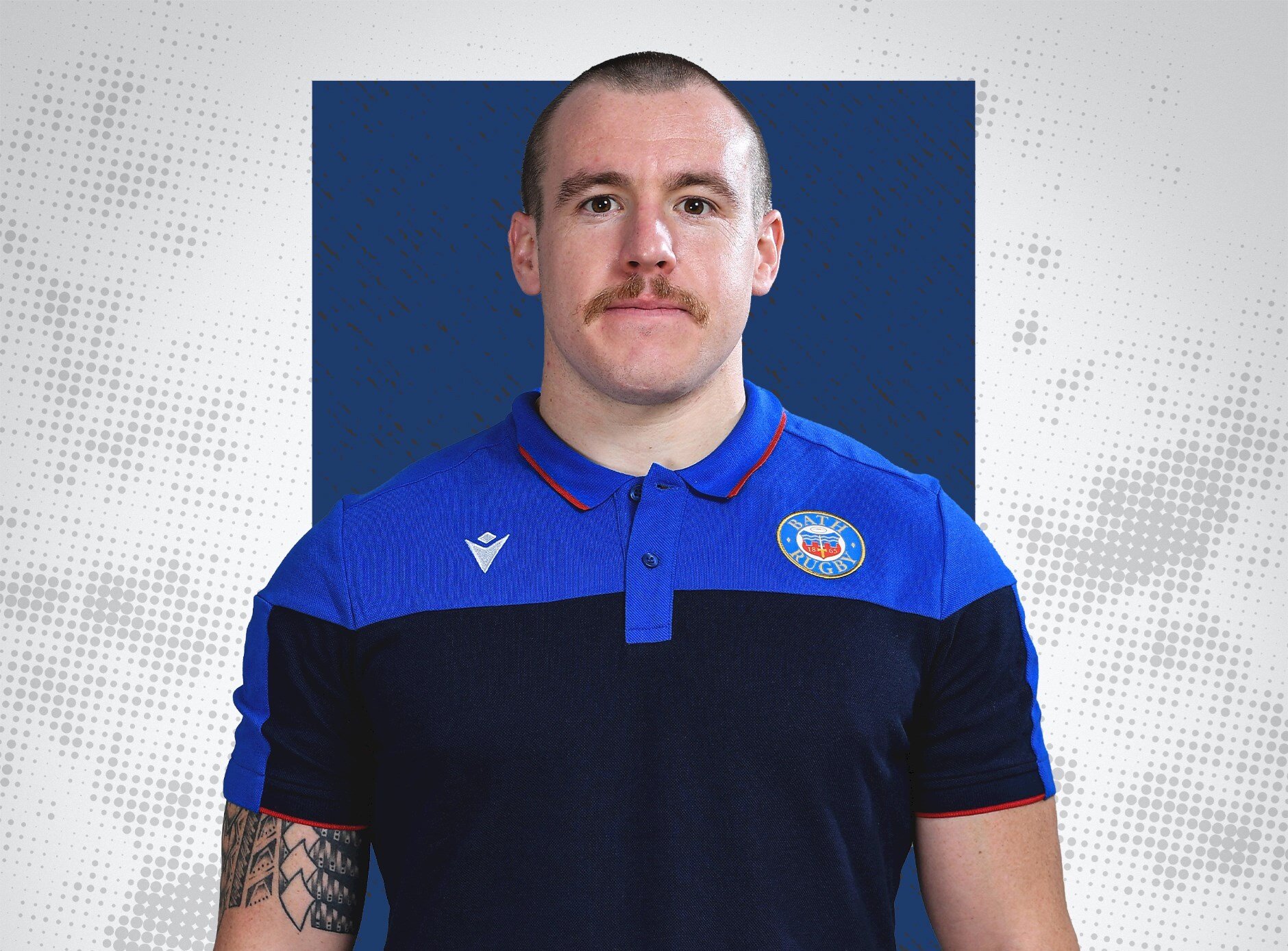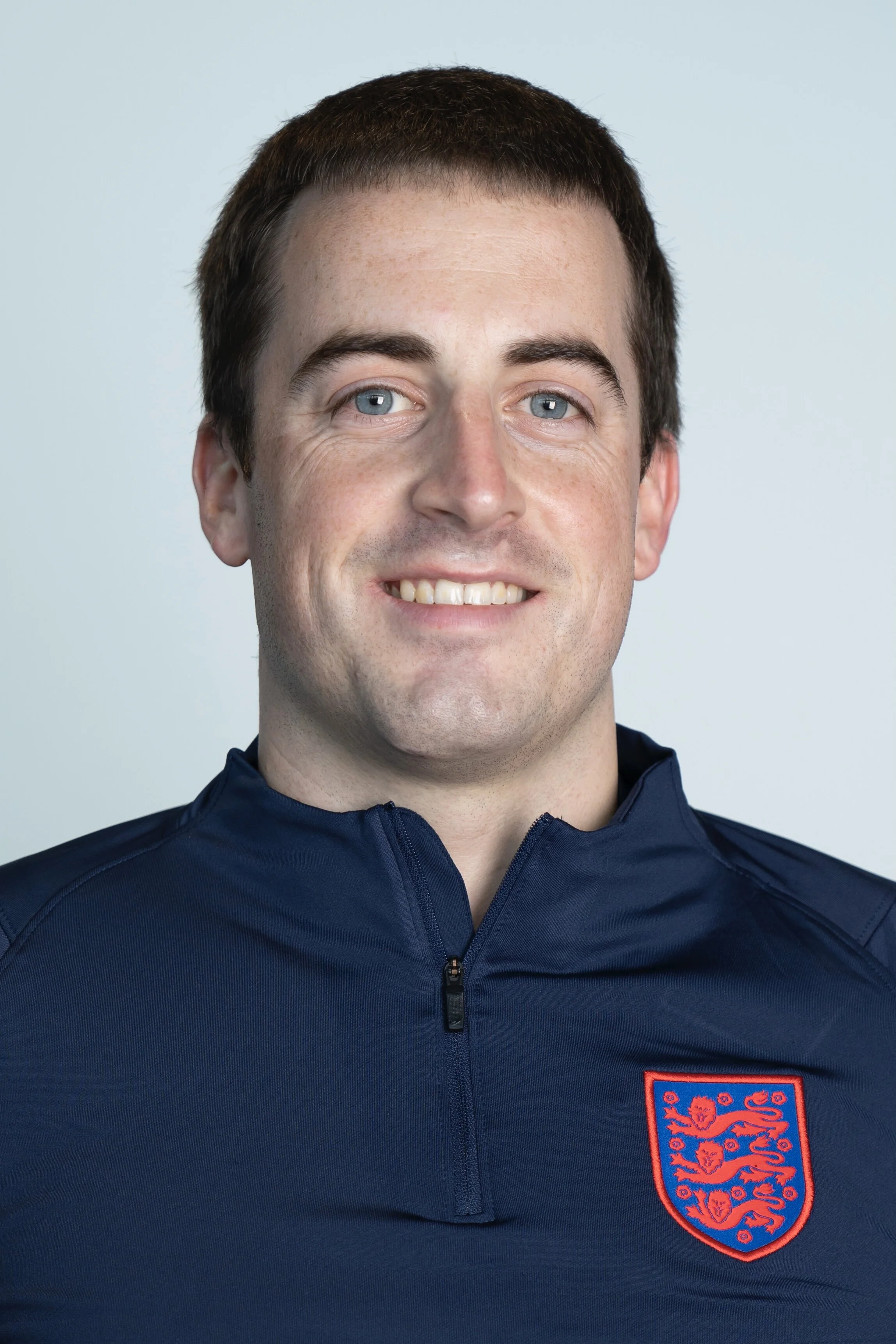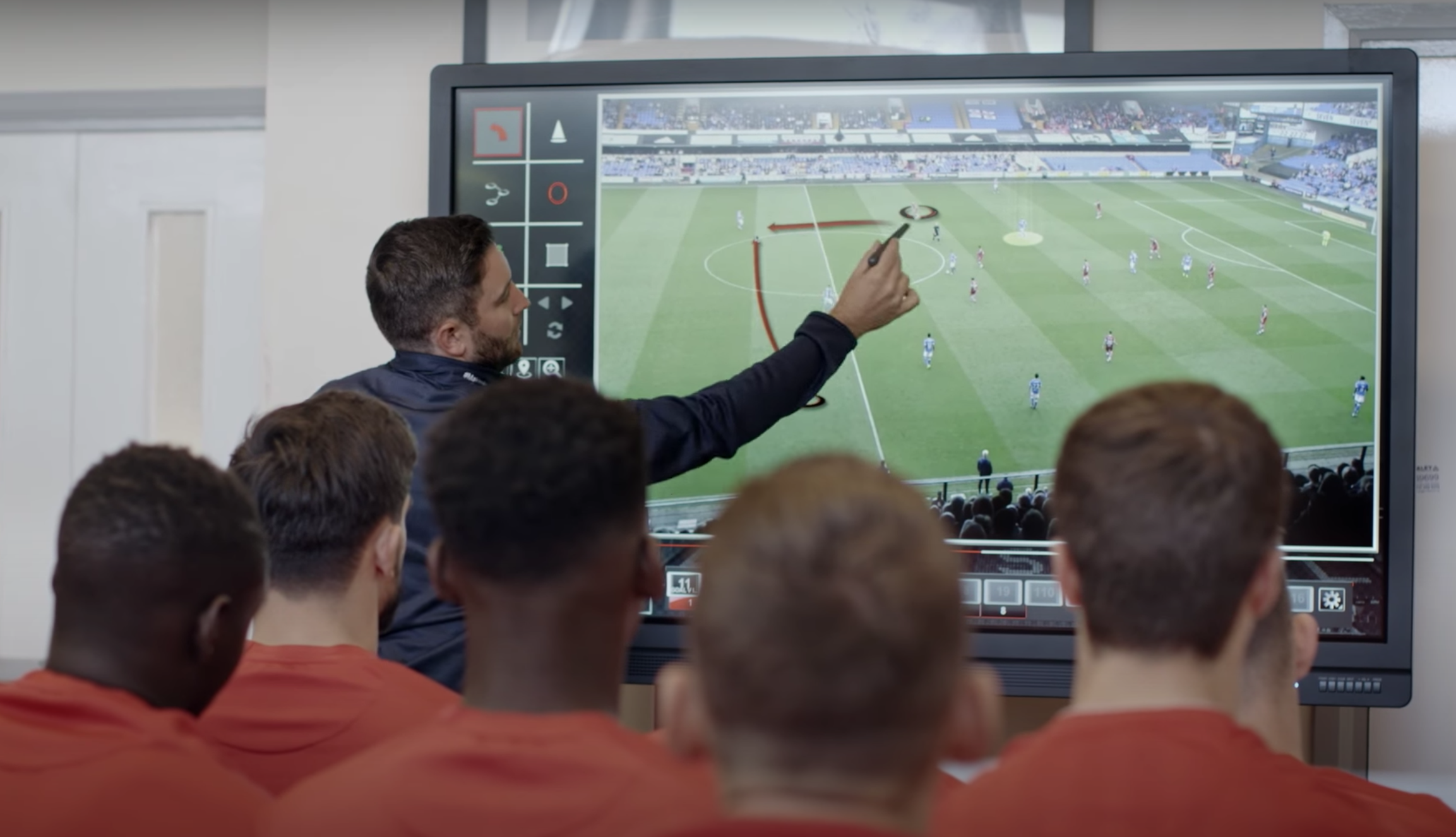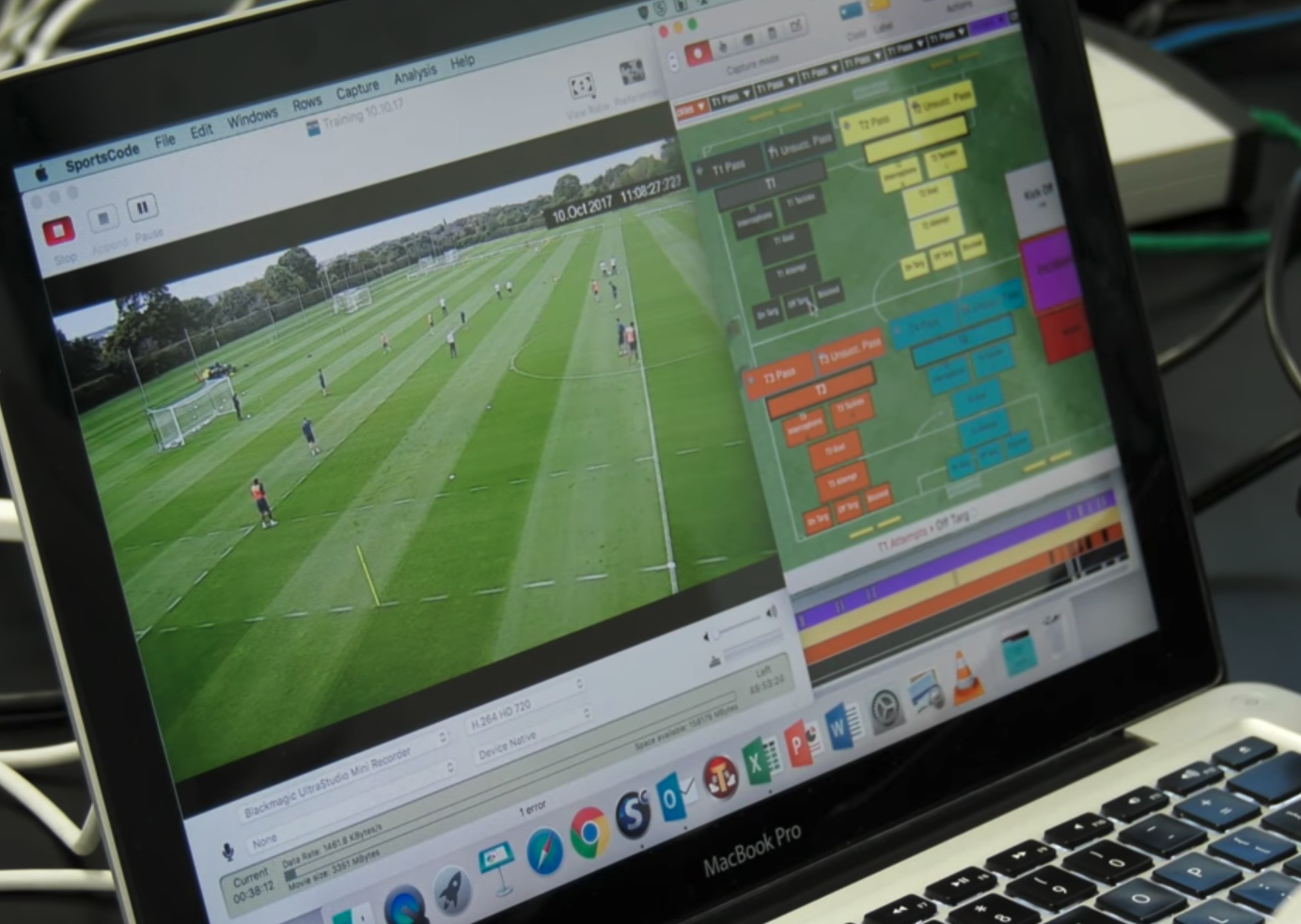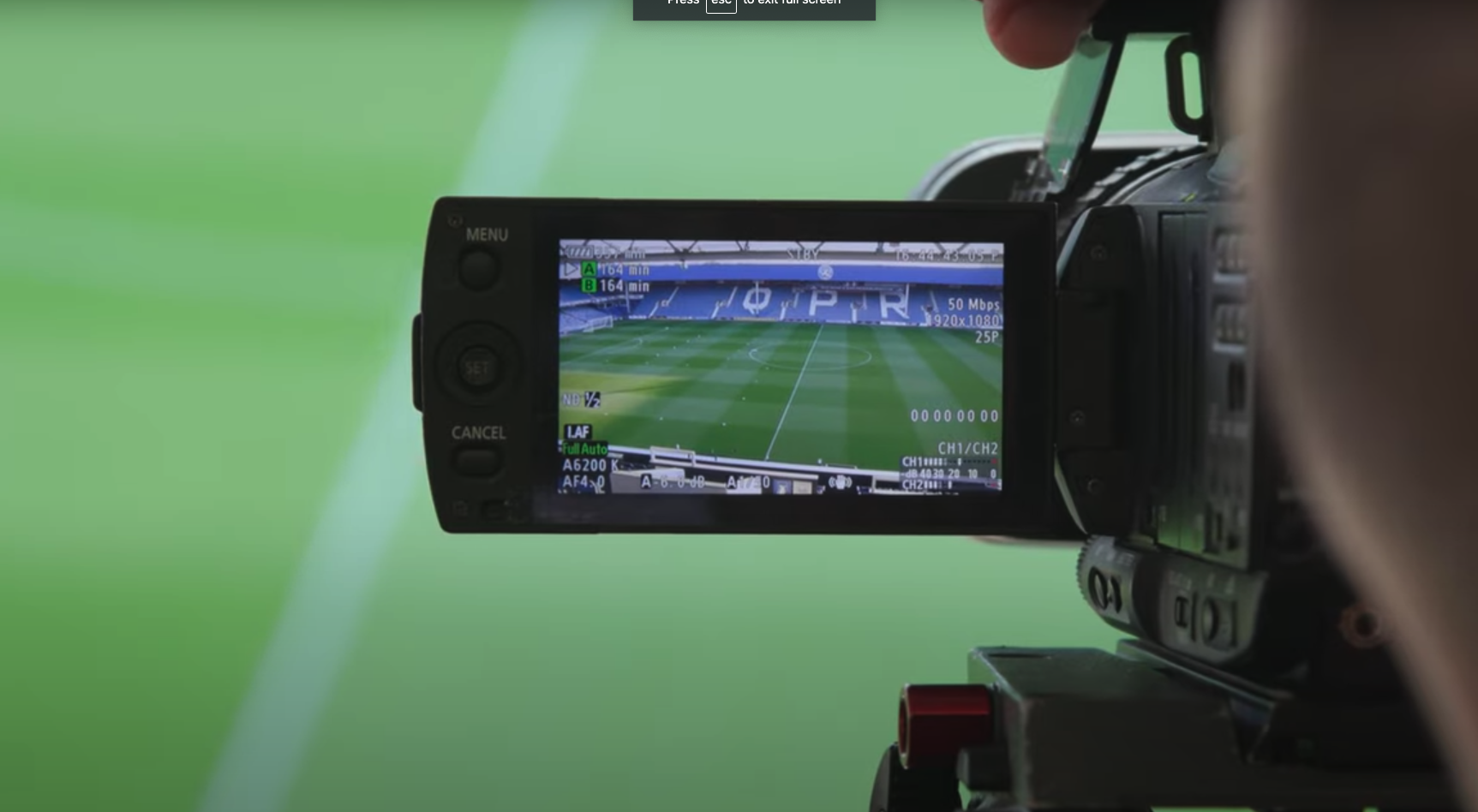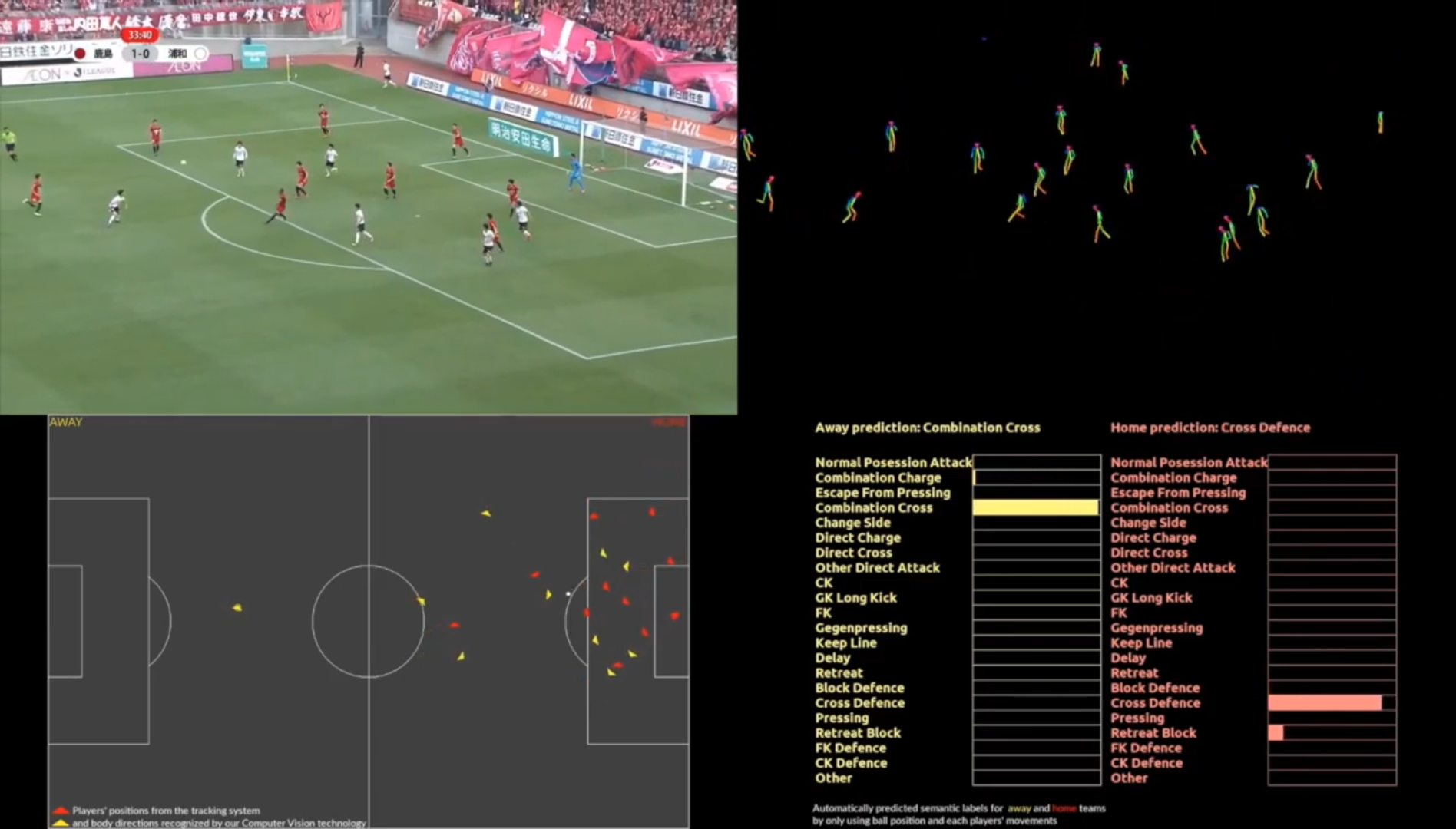Matt Egan is a First Team Performance Analyst at Bath Rugby focusing on Attack and Backs. He previously worked for the England RFU and Leicester Tigers. Matt tells us about his experiences and what it is like to be an analyst at Bath Rugby.
Tell us about your background. What made you want to become a Performance Analyst?
I am from Northamptonshire, a small town called Corby. I went to Loughborough University and ended up doing a Sport Science degree there. When I was at Loughborough, the university had a mentorship programme at Leicester Tigers, so for my Performance Analysis module I would go work at Leicester Tigers with Simon Barbour, who was my first boss. He was unbelievable, one of the top in Performance Analysis in Rugby Union.
I was working a Leicester Tigers throughout my final year of university. Obviously, I would learn the theory at uni and then go do the hands-on experience at Leicester. The way Leicester works is that, when you are an intern, you can also go and work for Nottingham as well. I would work at Leicester Tigers under Simon and some other analysts, and then also when there was a game at Nottingham I would do that by myself. It was really good learning.
After university, I decided to go travelling. I went to New Zealand to play rugby out there for the season. I loved it. Then, while I was in New Zealand, Simon contacted me about a job that came up with England. It was through Insight Analysis, formerly PGIR when I first joined. The job came up with PGIR, did the interview on Zoom from New Zealand and then got the job. I had to come back to England in two weeks time, which meant my travelling was cut short, but it was too good of an opportunity to refuse. There are not that many times an opportunity like that comes up, especially in a professional environment.
At England I was working directly with Mike Hughes and Duncan Locke, the two England Senior Analysts at the time. They were my bosses and I worked directly with them. I also worked with Kate Burke, who is also in the RFU, and Austin Fuller, who is now at Hudl. They were the senior characters in the environment at PGIR at the time. I started doing all the individual coding for the English Premiership squads each week. I also filmed and coded the Championship. I did the Bedford Blues and loved it there. The coaches there are unbelievable, really good guys.
After working on that for a while and as I progressed, Mike and Locke kept introducing me more and more into the senior work. After a couple of months, I was there in camp doing all the Six Nations, Autumns and Summers. I became heavily involved. I was also in the 2015 World Cup, which started off as a highlight but did not end as a highlight (England did not reach the knockout stage). After that World Cup, Eddie came in and there was some change in personnel. Locke left so I then stepped up and went to the Australia 2016 tour with Mike. It was an unbelievable experience.
As I was in Australia, the Bath Rugby job came up. Speaking to Mike, it was very much that he was not going to be leaving England anytime soon, so for me to get more experience the idea was to go elsewhere and work at a club for however many years and then potentially return back to England. I joined Bath Rugby and worked with Dan Cooper, the Head of Performance Analysis at Bath Rugby and who had previously done the England 7s and the Olympics. I also work with Matt Watkins who has been there at Bath pretty much all his career. The two are very good analysts. Both have different traits and are very good people to work with.
What does a typical day as a Performance Analyst at Bath Rugby look like?
As a First Team Analyst at Bath Rugby I specialise in attack. Since there are three of us within the first team, we would split the game up. I look into attack with the attack coaches Girvan Dempsey and Ryan Davis, Dan Cooper will do defense with Neal Hatley, and Watkins will do set pieces (lineout and scrums) with Luke Charteris and Mark Lilley.
A day at Bath Rugby usually starts with an early morning meeting, which can be as early as 7am. We are in for the first meeting at 7am to review the training session from the prior day or the game, depending on the day that we come in. We start off with that and then we start looking at how we can review it back with the players, whether that is through a meeting with the coaches or straight onto the pitch to do walkthroughs. After that, we start designing the training for the day. We go through the training, looking at what outcomes we want to get from the session. We then just look through the list of players to see who is available and who is not. My role within that meeting is usually to provide some stats and some visuals, some sort of evidence-based opinion of how the training was and to back it up with what we try to get from that session to see if we achieved our goals. We tend to look at things against our principles. Any aspects of our game that we monitor regularly to check whether we are still developing in those areas. After that part of the meeting is done, I just make sure that I connect up with the coaches or whoever is in the meeting to make sure that we have clips available on the points that we want to get across to the players and to understand what the plan for training is, what filming requirements will be needed and what we are looking to review post training. The meeting starts at 7am and usually is done by 8am or 8:30am.
Once the first meeting is done, we have a moment to get coffee and a little bite to eat. Then usually we have back units training in the morning, which can start at 9am or 10am. That is the first meeting out on the pitch with a big screen to go through clips with the players. I normally just run the laptops while the coaches speak through the clips and direct me through it. Then we go straight into some back units training, where I would film and clip it up afterwards to send it to the other analysts to have a quick review with the coaches and see if there is anything that we need to pick up with the players before the team session in the afternoon.
Once backs units training is done we start planning for the team session. We start thinking about what we are going to need for filming and so on. At the moment with Covid-19, we are not in contact as much with people, so we have to start planning and start identifying what we are going to need beforehand. Also, our pitch at Bath Rugby is not great so we are actually training in a different facility. We start in the morning at our usual base and then have to travel in the afternoon somewhere else for our team session with all the equipment, making sure it is all running. You’ve also got to be prepared for any weather, since you can see, like lately, that it can be sunny in the morning and then start hailing in the afternoon. Your car is usually full since we pack a lot of stuff.
We usually have a couple of hours between sessions. Team training could be at 1pm or 2pm. Within those hours, the big thing for me is to start trying to get ahead of what I need to do. I start looking at the opposition for the week after. If there are any trends in the last couple of games, I get that across the coaches and any of our leaders within the team that need to see them. There is a big emphasis in our club that analysts should not be looked at just as coding monkeys. Analysts have to be present and they get asked questions, making sure we engage with the players, go around chatting with them, not just about rugby but also to get to know them. That is a big emphasis at the club, which makes the rugby chat with the players a lot easier later on.
Bath Rugby is a really good club in that way. You hear stories from players that come to our club and we ask them about an analyst at the club they have just come from and they say “oh, spoke three words to him in 4 years”. For us, as a group of analysts, we are actually really sociable with the players. We make sure we connect with them, get in and around them and we can go through clips with them with honesty. Players then open up to us. If there is anything they don’t see or agree with they would open up and they would trust us quite a lot to pass on that information or not. Those couple of hours in between sessions are good in that sense, to make sure you are not just sitting behind your computer but getting to know the players.
For the team session, we get down there with all our equipment and just film it. Then we clip it up, get it online using Hudl for everyone at the club to see, and send it out to the coaches to start the review process. Then it is Groundhog Day again, the next day is the same.
We are always looking directly at the next game. As an analyst, we’ve got to make sure we don’t get distracted too much with other games. You’ve got to make sure that you are still engaged in the week ahead. This weekend for instance, we are playing Newcastle, so I need to look at the game plan for Newcastle and see how it matches to our principles. That is what I’d be reviewing in each session during that week. In-between that, I may get down at looking at the following fixture against Worcester and making sure I’m taking on that end because we might review them at the end of the week. But I need to make sure I’m ready for that without disregarding the game against Newcastle this week.
What is the main highlight of your Performance Analysis career so far?
My two highlights involve England. The first one is the 2016 tour in Australia. It was the first time the England team went to Australia and won 3-0. It was an unbelievable experience doing something you love while being there and it being a success. It was unbelievable being involved in the games and being trusted with live feeding information to the coaches. We were looking at work-rate of certain players, so I was coding it live, feeding it live to the coaches and then substitutions were made on that data. It was an eye-opener and a really good feeling. You can really have a real impact depending on the coaching squad you work with. I’m not saying that whatever I did could have changed the game for the better, it all depends on how responsive and how much your coaching groups trusts you and how much they look at the right things. But you can actually really have a real impact as an analyst and for me that was one of those occasions.
My other highlight was the 2019 England vs Barbarians match. I got invited back to do the match for England. The thing I loved the most about that experience was meeting so many different people. It was a really good highlight being back in camp and everybody there just wanted to enjoy it. It was just a really good week meeting new coaches and new players, something you don’t really ever get to do because once you are in a club, you are in a closed club environment. It was really nice and refreshing to speak with different people, seeing different faces and ending up beating Barbarians at the end as well. From that experience, I’ve built some really good relationships. I am still in contact regularly with one of the coaches and a couple who I still speak to often. It is a nice highlight in a different way.
What are the most challenging aspects of being a Performance Analyst?
One of the most challenging aspects of the role is that when you first come into it, you are really hungry and fresh so you work every hour under the sun and do everything. But then, it is actually one of the most challenging things to pull back from that. You’ve got to be able to pull back from that starting pace, taking out the information that is not being used by coaches. You need to have those conversations with your coaches, making sure that as a squad you know exactly what you are looking for. In the worst case, you are going to spend 9 hours on a review and none of it is going to be used.
That is something I have definitely done, even had it at parts of this season. I was spending 3-4 hours reviewing something and ended up producing nothing that just watching the video wouldn’t have already told the coaches. It is really challenging to realise at the time and have that difficult conversation with the coaches. You just tell them that it takes you 4 hours to produce one single number that they use and ask them if that one number is that necessary or could we trim that time down so you could look into something more valuable. Thankfully, the coaches at Bath Rugby are actually really understanding of the timescale of analysis. Although, don’t get me wrong, when the pressure comes, the pressure comes and you get asked to do lots of different things regardless. But the coaches here do ask how long do things take and whether we use them. Sometimes, it is actually down to me to bring it up and I’ve still got to get better at it and bring up things that we produce that I’m not really sure that they get used. It’s a tough one because as an analyst there is a mix of things where you have that drive to make sure you are covering everything because everyone out there is looking for that golden nugget. But it is never out there. There is no winning formula, but we are still searching for it, so you end up digging into things probably far too deep.
The biggest thing is to make sure you take a step back and have a look at what you are working on. The thing that definitely helps is if your club, sport or coaches have a clear idea of how they want the game to look and how they expect it to be played. Then, you can really start narrowing down the areas to look at. But if you don’t have a clear goal and understanding of the principles or the framework, you end up just bouncing around week after week looking for something different each week and produce reports without knowing if the team got any better.
What are the most important skills to have as a Performance Analyst?
I would never underestimate the basics: being able to film, code and distribute information. You would never get told “that’s really good footage” or “that’s really good camera work”, but as soon as you do it wrong, you will get told. You never get told “that is really good coding”, but as soon as you do a mistake in your code, you get told. You always need to make sure you have your Performance Analysis basics right. If you have your basics right, everything else on top is just a bonus. At the moment, a lot of coaches as long as you give them the film and the code that they want they are able to use Hudl Sportscode to do their own little clips. As long as you can supply them with the basics, they are usually quite happy. Giving that extra 20-30% of your own individual skill on top of that is what makes you different from everybody else. But as soon as you don’t hit those basics, you are going to get told.
Another thing is building relationships. You have your technical skills on one side: making sure you know how to work a camera, capture video and, if it goes wrong, problem solve to make sure you always get the footage and work back from there. But on the other side, building those relationships with coaches, with the team, the players is important. You’ve really got to build that trust in the bank for when that one time when it does go wrong and you can’t fix it. Then, the coaches would be “actually, it’s the first time that he got something wrong in about 3 years”. It is going to happen, everyone makes mistakes, but building that relationship and trust can make that conversation more human and understanding.
How is data and analysis being used and perceived at Bath Rugby?
At Bath Rugby, particularly on attack analysis, we use analysis in two ways. We use data for check-ins, to see if we are hitting the targets that we want to hit against our principles each week. We look at metrics over a period of time and see whether they are dipping or getting better and then do work off that, always comparing it to our principles. Then we also have the visual and video side of things. There needs to be a really good blend between the two. If I’m looking at something, you cannot only use video because then you will never identify any sort of trend or pattern and you will never have any weight behind what you say, since you are just showing the instances happening in one game that may change in the next game. Whereas, if you make sure you have your principles right and you are tracking data against them, you can then attach video to it.
We also look at wider trends. We’ve always got an eye out on what is happening within our league and other leagues. We use larger datasets using Opta to do little check-ins with that data every so often. All three of us analysts are quite experienced and we can pick up on things in the game quickly. Between the three of us, one of us will pick up on something that they’ve noticed and then we’ll dig a little bit deeper into that using a larger dataset. Once we’ve identified it, we will start looking into the footage of that area.
What are the main tools and technologies used at Bath Rugby?
The obvious things like cameras and so on. We have a variety of cameras, the usual recording cameras and then we’ve also got some of the higher poles, small cameras with higher viewpoints. To be honest, those are probably one of the best things we’ve bought. They make it so much easier to film on whatever angle we want. We also use drones, GoPro and also try to capture some audio using some of the small USB audio devices.
In terms of software, we use Mac applications and Hudl Sportcode. We also use CoachPaint quite a lot. It is really good and looks very professional. We’ve got a few touchscreens, but with Covid-19 we cannot use them at the moment. They are very similar to Gary Neville and Jamie Carragher’s Monday Night Football where you would be able to get a few movies on there, add a few clips, get the coaches and a few of the players and then just ask them questions to get them to start drawing on the screen and start building their understanding of the game around that. They are really good and I look forward to start using them again soon.
When it comes to footage, within the league everyone uploads to Hudl. We just download the four camera angles off there, which makes it handy. If there are not there we just grab them off Opta. We use Opta's SuperScout to get the codes as well. Opta has done a really good job at being able to pull the data off their platform. We are able to pull out some stats and compare week on week against oppositions to see if there is something different. We then do our own individual analysis, coding on top of the Opta data to look into how we can apply our game against them.
How do you see the field of Performance Analysis evolving in the next few years?
In terms of technology, I see that with some sort of AI technology or similar you will be able to put the players and the coaches into game situations without them having the physical demands of playing the game and then see what decisions they make in different situations. Simulation devices like VR will allow you to just put the device on and be realistic enough that you really start feeling the heart rate go. You will be able to put players in pressure situations where they will have to make instant decisions in the moment. I believe that is where the future is heading.
I also feel that Performance Analysis is going to split into two areas. You are going to have the data side of things and then you are going to have coach-analysts on the other side. Data analysts or scientist are going to be doing all the trends and work on big datasets, looking at data from games everywhere in the world and producing insights from those. Whereas, the coach-analysts are going to be the coaches’ right-hand men to turn the data into common sense. They will be almost like a translators, since it doesn’t matter what figures you pull out, if nobody understands them they are not going to have any impact.
Coaches are actually becoming more proficient with tech. You see some of the older coaches now come in and when they don’t know how to use Hudl they soon feel embarrassed. All the younger coaches that have come through the academy are all proficient with Hudl Sportscode. They all know what they are doing. They pull up organisers, they do the drawing on them, they’ll have their meetings sorted with all their clips ready. Some of the older coaches at times ask about how to do things in Sportscode. It’s really good to see. It is modern-day coaching and as a coach you need to be able to do that now.
What advice would you give to someone looking to become a Performance Analyst?
The advice I’d give someone looking to start is to jump in and get involved. Start getting the basics right. The sooner you can start getting the basics the better. The domain knowledge of the sport is not crucial. To work in rugby as a Performance Analyst, you don’t need to go into it as a rugby expert. You can go into it as a rugby novice and just have basic understanding of the game, but if you can do the basics of analysis (filming, capturing, coding, work to the timeframes, work under pressure) you then learn the knowledge of the game as you do it. You need to make sure you understand that as a Performance Analyst you have to make sure you can film, capture, code and work long hours. If you can do that, then everything else you will pick up naturally.
Once you get the basics right, you need to start working on some emotional intelligence aspects. With coaches, egos get damaged quite a lot and sometimes you have to be there to pick them back up. At the end of the day, even though you are working as a team, the coaches are the ones who get fired if it’s not going well on the pitch, so they have immense pressure. You are there to support them. You need to make sure that you are there as a support mechanism for coaches. You need to challenge them in a supportive way. Ultimately, they are the face of it and the ones who take the brunt. As frustrating as it can be at times in a high-pressured environment, actually all the pressure is on the coach and we are there to support them.
That’d be my advice. Make sure you learn the basics and then start being able to understand the people by building that emotional intelligence and the relationships with the coaches. Emotions run high in professional sports. When they are high they are really high and when they are low they are really low. It jumps between those two states each week and is never stable.
